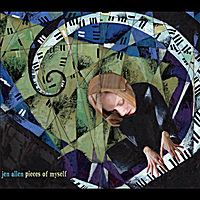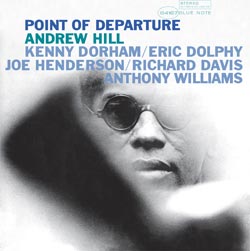Home » Jazz Articles » Book Review » Brian Harker: Louis Armstrong's Hot Five and Hot Seven Recordings
Brian Harker: Louis Armstrong's Hot Five and Hot Seven Recordings
 Louis Armstrong's Hot Five and Hot Seven Recordings
Louis Armstrong's Hot Five and Hot Seven RecordingsBrian Harker
Softcover; 186 pages
ISBN: 9780195388404
Oxford University Press
2011
In 1925, Louis Armstrong was 24 years old. He had just returned to Chicago from New York City at the behest of his second wife, pianist Lil Hardin Armstrong, who wanted Armstrong back in the Windy City to play with her band. Armstrong had already appeared on numerous recordings, but now he was asked to cut his own sides with OKeh Records. Backed by a varying group of stellar musicians, Armstrong proceeded to make over seventy recordings between 1925-28, a now-legendary output known collectively as the Hot Fives.
It's a truism to say that the Hot Fives constitute the foundation of jazz, but in Brian Harker's excellent book, he shows exactly why this is so. Harker approaches these recordings by focusing on seven exceptional songs, each one representing a specific stylistic or technical advance. For example, in his analysis of the 1926 masterpiece "Cornet Chop Suey," Harker firmly places Armstrong in the context of the vaudeville tradition: in order to survive, vaudeville performers had to provide novelty, and even a great musician like Armstrong's mentor, cornetist Joe Oliver, used to make baby cries and farm animal noises with his horn. Unlike other musicians, however, Armstrong's eccentric playing was based on difficulty; he invented his own elite brand of novelty through playing the cornet like a clarinet, which created a sound previously unheard. Harker also makes an important connection between Armstrong's playing and tap dancers, particularly Bill 'Bojangles' Robinson. Through accompanying the dancers' complex footwork, Armstrong developed a new rhythmic vocabulary, which eventually became the foundation for swing music.
Subsequent chapters delve into "Big Butter and Egg Man," "Potato Head Blues," "S.O.L. Blues," "Gully Low Blues," "Savoy Blues" and "West End Blues," with discussions on Armstrong's innovations as a soloist, his harmonic approach to improvisation, his creation of the modern trumpet voice, his consolidation of sweet and hot jazz, and his stylistic versatility. In addition to these breakthroughs, Harker makes it clear that the Hot Fives are not an endless string of masterpieces; the sides show Armstrong experimenting and not reaching his goals, and then finally making one of his paradigm-shifting leaps. Perhaps one of the most disturbing stereotypes about Armstrong is that he was some sort of unschooled genius who made music effortlessly; Harker makes it clear that all Armstrong's innovations were grounded in hard work, including relentless practice, lengthy rehearsals, countless gigs, and lessons with Lil (a dynamic woman way ahead of her time), not to mention healthy doses of courage, imagination, and ambition.
Armstrong's journey through the Hot Fives turns out to be a great adventure story, a narrative buoyed by Harker's love for his subject matter. The book's unique blend of biography, scholarship, oral history and musical analysis allows the author to come at the recordings from several interesting angles, and altogether Harker provides an enjoyable and thought-provoking entry into the music. There is a fair bit of musical notation and analysis, but Harker always provides narrative summaries of his musical scrutiny, so no reader is left behind. And for those who want to learn more about Armstrong and his times, the bibliography provides a comprehensive jumping-off point, including essential works such as Terry Teachout's superb Pops: A Life of Louis Armstrong (Houghton Mifflin Harcourt, 2009) and Nat Shapiro and Nat Hentoff's classic Hear Me Talkin' to Ya: The Story of Jazz as Told by the Men Who Made It (Rinehart, 1955).
When the musicians on the Hot Fives stepped into the recording studio, they had no sense that history was about to be made. Armstrong later said, "When we made the Hot Five and Hot Seven records, it was just pick up those cats and do it . . . Got $50 each for each session, just a gig to us and glad to do it so we could go up town and have a ball with the money." The jazz world of the 1920s did not understand what was afoot either, and in fact the revolution that Armstrong initiated went undetected for a very long time. Now almost 100 years later, that revolution is bright as the sun; and as Armstrong's legacy continues to unfold, a book such as this helps illuminate the tremendous gifts we were given.
Tags
Louis Armstrong
Book Reviews
Florence Wetzel
United States
Lil Hardin Armstrong
Joe Oliver
Bill "Bojangles" Robinson
PREVIOUS / NEXT
Support All About Jazz
 All About Jazz has been a pillar of jazz since 1995, championing it as an art form and, more importantly, supporting the musicians who make it. Our enduring commitment has made "AAJ" one of the most culturally important websites of its kind, read by hundreds of thousands of fans, musicians and industry figures every month.
All About Jazz has been a pillar of jazz since 1995, championing it as an art form and, more importantly, supporting the musicians who make it. Our enduring commitment has made "AAJ" one of the most culturally important websites of its kind, read by hundreds of thousands of fans, musicians and industry figures every month.





















